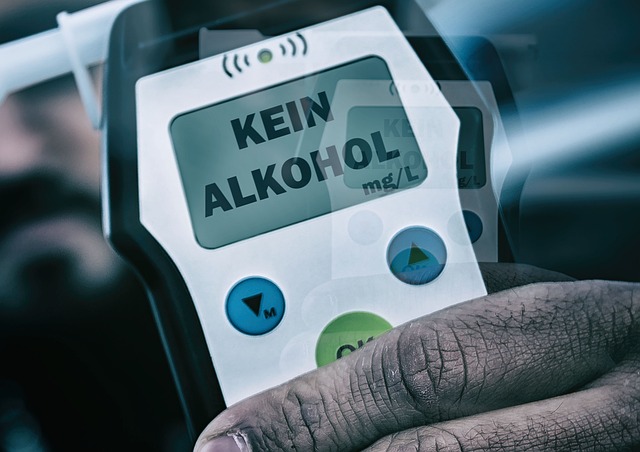The evolving field of drug interaction and DUI (Drunk Driving) laws navigates the complex interplay between scientific advancements and societal concerns. As medication use increases, so does the need for proactive regulation. Technology plays a pivotal role in this process, revolutionizing legal practices through advanced algorithms, data analytics, and case management software. These tools enable swift analysis of case law, regulatory changes, and scientific research, enhancing legal compliance accuracy and efficiency. Law enforcement agencies also leverage technology, such as data analytics and AI, to predict and prevent drug-related crimes, identify DUI offenders, and improve road safety, ultimately shaping fairer and more effective justice in Drug Interaction and DUI Law.
In today’s digital age, understanding and staying ahead of drug interaction and DUI (Drug-Impaired Driving) laws is more complex than ever. This article explores how technology is revolutionizing legal compliance in this critical area. We delve into the current landscape of drug interaction laws, highlight innovative tech solutions for law enforcement, and present successful case studies demonstrating their impact on road safety. By embracing these advancements, legal practices can future-proof themselves, ensuring enhanced protection and reduced DUI incidents.
- Understanding Drug Interaction and DUI Laws: The Current Landscape
- The Role of Technology in Enhancing Legal Compliance
- Future-Proofing Legal Practices through Innovative Tech Solutions
- Case Studies: Successful Implementation of Tech for Law Enforcement and Safety
Understanding Drug Interaction and DUI Laws: The Current Landscape

The current landscape of Drug Interaction and DUI (Driving Under the Influence) laws is complex, reflecting evolving scientific understanding and societal concerns. Drug interactions refer to the way in which medications or substances affect each other when taken simultaneously, potentially altering their efficacy or safety. This is a critical consideration in the legal context, particularly with DUI cases where impaired driving abilities are at stake. Laws regarding DUI vary significantly across jurisdictions, but they universally aim to prevent individuals from operating vehicles while under the influence of drugs or alcohol.
Understanding drug interactions is paramount for law enforcement and legal professionals alike. With the proliferation of prescription medications and recreational substances, the likelihood of drug-drug interactions has increased. This requires a nuanced approach in interpreting DUI laws, as it becomes more challenging to define what constitutes impairment. The onus is on individuals to be proactive about their health and medication regimens, and on legal systems to adapt their regulations to account for these complex chemical dynamics.
The Role of Technology in Enhancing Legal Compliance

Technology plays a pivotal role in future-proofing law, especially in complex areas such as drug interaction and DUI (Driving Under the Influence) regulations. Through the power of advanced algorithms and data analytics, legal professionals can now streamline processes that were once laborious and time-consuming. For instance, AI-driven systems can swiftly analyze vast volumes of case law, regulatory updates, and scientific research to identify relevant information and precedents, enhancing the accuracy and efficiency of legal compliance checks.
Moreover, tech solutions enable real-time monitoring of drug interaction databases and DUI-related data logs. This ensures that legal practitioners and regulators have up-to-date insights into potential risks and emerging trends. By leveraging these technological advancements, the legal landscape can adapt more rapidly to changing societal needs, such as addressing new substance interactions or refining DUI laws based on recent research findings, ultimately leading to fairer and more effective justice systems.
Future-Proofing Legal Practices through Innovative Tech Solutions

In today’s rapidly evolving digital landscape, future-proofing legal practices is more crucial than ever. Innovative tech solutions are revolutionizing how law firms and legal professionals operate, ensuring they remain competitive and relevant in a constantly changing legal environment. One area where this is particularly notable is in drug interaction and DUI (Driving Under the Influence) law. By leveraging advanced case management software, artificial intelligence for legal research, and secure cloud-based document storage, legal practices can streamline their operations, enhance efficiency, and improve client outcomes.
These tech solutions not only help in organizing and accessing vast amounts of legal data quickly but also enable practitioners to stay abreast of the latest legislative changes and judicial precedents related to drug interactions and DUI cases. For instance, AI-powered tools can analyze complex drug interaction scenarios, providing accurate insights that support informed decision-making. Additionally, cloud-based systems ensure secure access to critical case information from anywhere at any time, allowing for better collaboration among legal teams and more efficient management of sensitive client data.
Case Studies: Successful Implementation of Tech for Law Enforcement and Safety

In recent years, law enforcement agencies have successfully embraced technology to enhance their operations, particularly in areas like drug interaction and DUI (driving under the influence) cases. A notable case study involves a major city that implemented an advanced data analytics system to predict and prevent potential drug-related crimes. By analyzing historical data on drug trafficking patterns, the system could identify high-risk areas and times, allowing police to deploy resources more efficiently. This proactive approach significantly reduced drug-related incidents and improved public safety.
Another successful example is the use of artificial intelligence (AI) in DUI enforcement. AI-powered systems can process vast amounts of data from traffic stops, including license plate recognition and driver behavior analysis, to identify potential DUI offenders. This technology has proven to be a game-changer, enabling law enforcement to make more accurate arrests and improve road safety during high-risk periods like holidays and weekends when drug and alcohol use tend to increase. These case studies demonstrate how modern tech solutions can future-proof law enforcement practices, making them more efficient, effective, and aligned with the evolving criminal landscape.
As we’ve explored, understanding drug interaction and DUI laws is paramount in ensuring public safety. The integration of technology has revolutionized legal compliance, offering innovative tech solutions that future-proof legal practices. Case studies demonstrate the successful implementation of these technologies in law enforcement and safety, emphasizing their potential to mitigate risks and enhance oversight. By embracing these advancements, we can navigate the evolving landscape of drug interaction and DUI laws with greater efficiency and accuracy, ultimately fostering a safer society.






